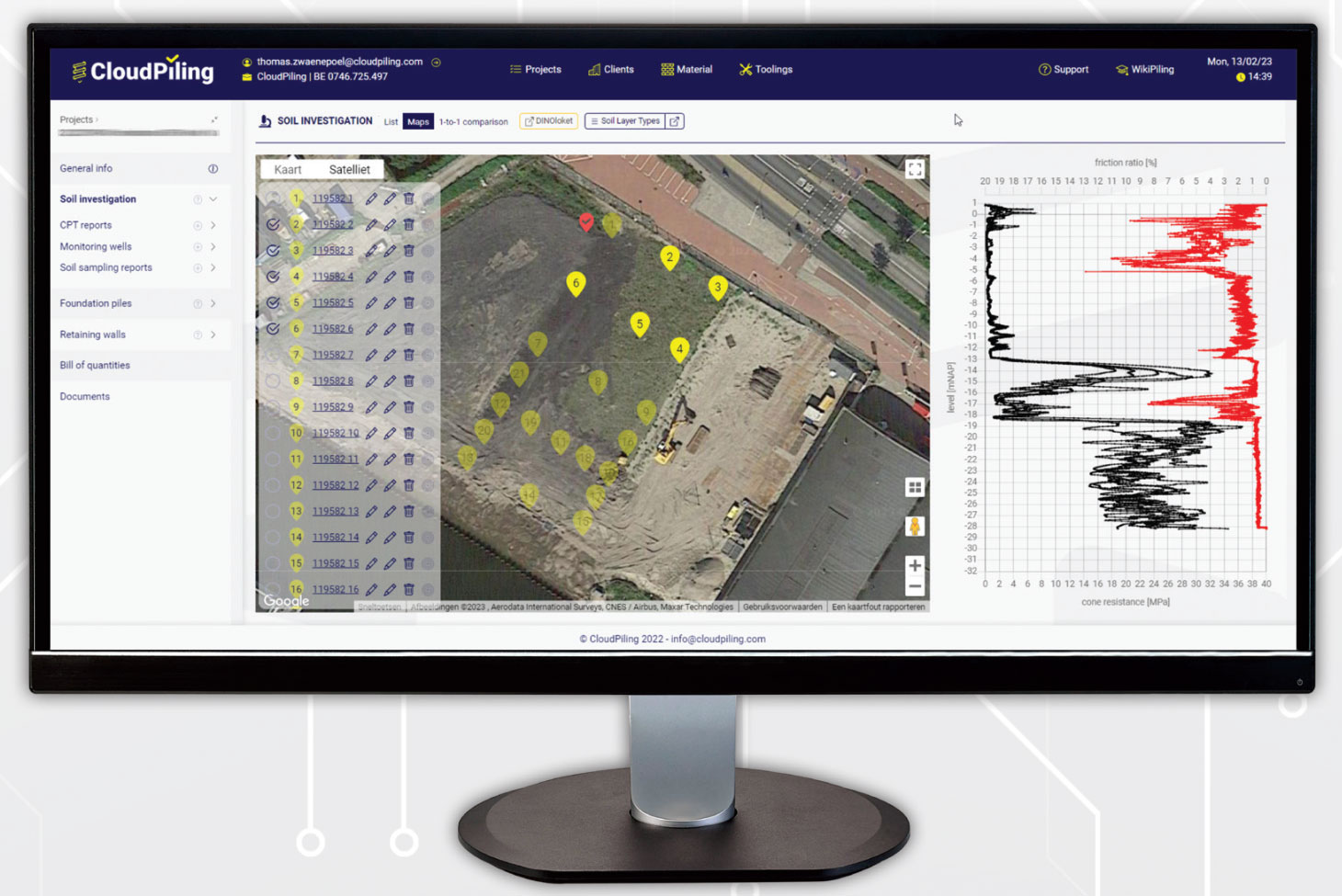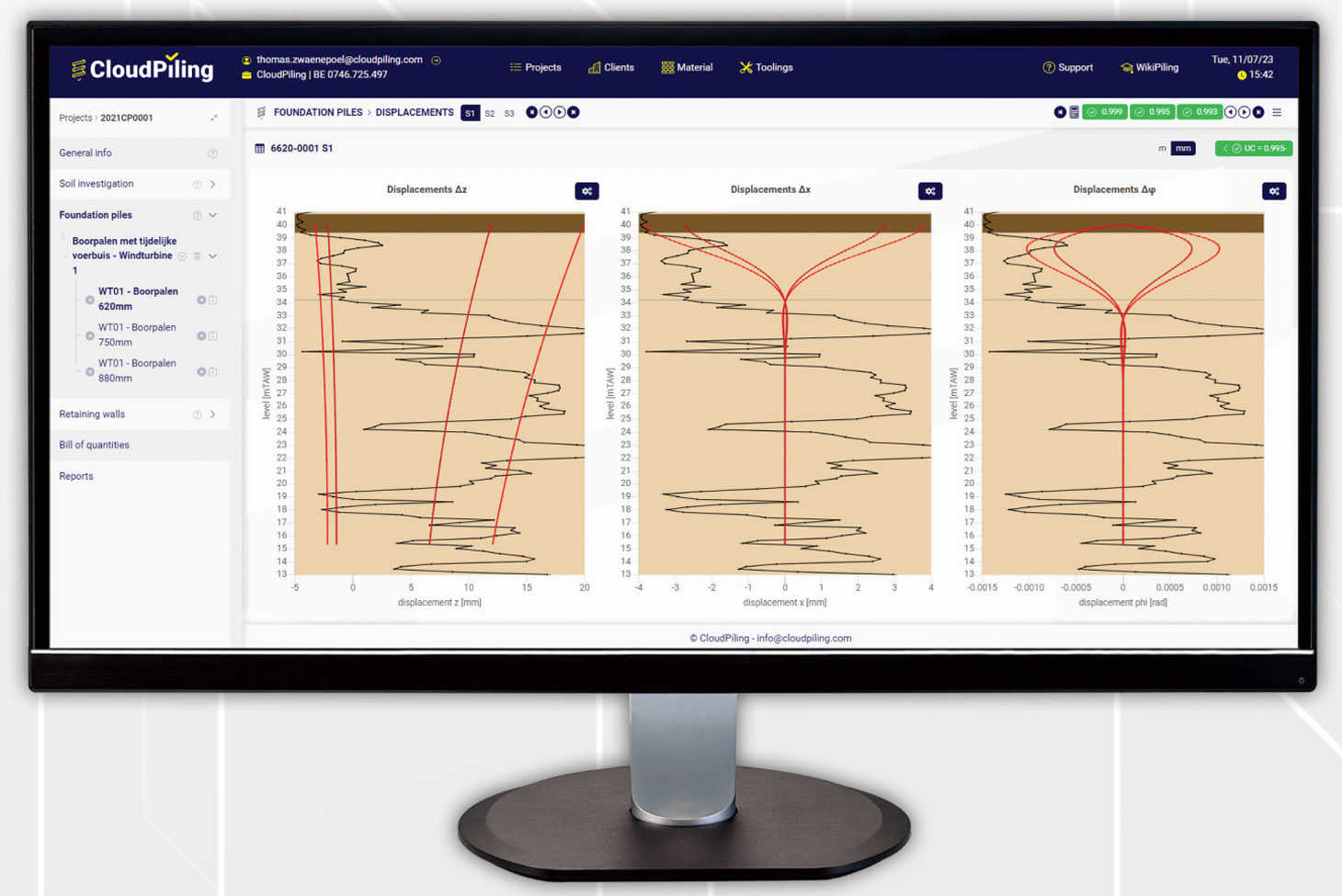
A Belgian company launched during the pandemic has brought innovation to the marketplace to help geotechnical engineers as they calculate requirements for foundation and retaining wall projects. CloudPiling is a platform – and the name of the company that created it – that eliminates the repetitive input of data into the multiple tools generally used in planning deep foundation projects.
“The motivation to build CloudPiling was twofold,” said Michelle Vanhove, director of operations and co-founder of CloudPiling. “On the one hand, there was frustration about the lack of proper software; on the other hand, it was also disillusioning to find that civil engineers were doing heavy university studies only to find themselves in the field dealing with endless, repetitive calculations in Excel. These could be better automated, giving those engineers more time to provide advice and think about concepts.
“We are convinced that automation through technology is not the future, but the present in the construction industry. This is why we want to upgrade the job of geotechnical engineers with our solution and let them really make a difference.”
“The idea of CloudPiling originated on my first day in the field,” said Thomas Zwaenepoel, technical director and co-founder of CloudPiling. “There, I learned firsthand about the software that structural and civil engineers had at their disposal to create geotechnical designs. Really good software simply did not exist at that time, so I decided to make it myself.
“CloudPiling is the first software worldwide that integrates all calculation tools for repetitive geotechnical calculations in one comprehensive web application. As a civil engineer, I stood with my boots in the mud and understood the requirements for such a tool, a great asset since most software tools are made by IT or academic people.”
The importance of an integrated geotechnical design
Pile design is commonly done as follows:
- First, a bearing capacity calculation is done to determine the required pile base level to ascertain the pile diameter and the type of pile system.
- Second, mostly only where there are horizontal loads or moments at the pile top level, a soil structure interaction calculation is performed to determine the pile’s shear forces, bending moments and horizontal displacements.
- Third, the structural design is done based on a conservative combination of vertical loads on the one hand and shear forces and bending moments on the other hand.
“We are convinced that automation through technology is not the future, but the present in the construction industry.”
Michelle Vanhove, CloudPiling
The CloudPiling software integrates the vertical and horizontal behaviour, and the structural design of foundation piles and retaining walls. This means an engineer can use data on point and shaft resistance, and negative skin friction resulting from the bearing capacity calculation to extend the soil structure interaction calculation. This extension allows the engineer to determine, for example, the normal force at each location in the pile.
With information on the normal force and bending moment at each location in the pile, engineers can perform a more detailed structural design analysis. Various scenarios – using more or less concrete and more or less steel – can be examined to evaluate capacity and calculate costs.
The benefits of CloudPiling
On the single central CloudPiling platform, all users within a company are working with the same data, entered once, reducing the potential for errors and saving users time by automating repetitive tasks.
With “a huge lack of engineers” in Belgium and the Netherlands, this time-saving feature is very important, says Vanhove. Engineers can do more of the creative work they enjoy – calculating the most-economic designs – and less data input. The time saving also enables them to review a broader range of options to determine the best design to meet capacity requirements and material-reduction goals.
Using less concrete and steel lowers project costs and reduces a project’s carbon footprint. Vanhove points out that the construction industry is responsible for 39 per cent of global carbon emissions, with foundations work accounting for 20 per cent of that amount. Reducing emissions is an increasingly essential consideration for a carbon-intensive industry in a carbon-conscious world. For Vanhove, it enables people to do something to address a big problem, even if only with a small step.

Information retention through the platform can also be essential. When a new project is planned adjacent to an existing building, for example, access to information about the foundation of the existing structure can help engineers determine requirements for the project. It could help them avoid the overuse of materials resulting from their limited knowledge of the nearby building’s foundation type and strength.
Product expansion and company growth
Originally available only for the Belgian market, CloudPiling now has a version for use in the Netherlands. Each version includes regulatory requirements specific to the country to ensure that designs meet building standards.
Vanhove and Zwaenepoel are interested in growing internationally in the long term. For now, their goal is to become the leading company in geotechnical design in the two countries where they now offer the software.
In the meantime, CloudPiling has been nominated for the Cobouw Awards in the Netherlands. These are the most important awards in the Netherlands to recognize achievements in the Dutch construction industry in such categories as digitalization, sustainability, innovation and infrastructure.
“We have just learned that we are among the three finalists, so we will be invited to the gala awards ceremony. This recognition means a lot to us,” said Vanhove.
Through a partnership with Ghent University in Belgium, the company offers its platform to students doing a master’s program in geotechnical engineering. The students can use the software as they work toward their education goals. The company has also been invited to give guest lectures at the university.
By providing engineers with more computing power, CloudPiling enables them to use steel and concrete more efficiently. Additionally, it allows engineers to question traditional foundation concepts and immediately calculate the economic and CO2 footprint consequences of any potential alternatives. The engineer has more control to choose the best possible foundation solutions.
To learn more, go to cloudpiling.com or email info@cloudpiling.com. ![]()